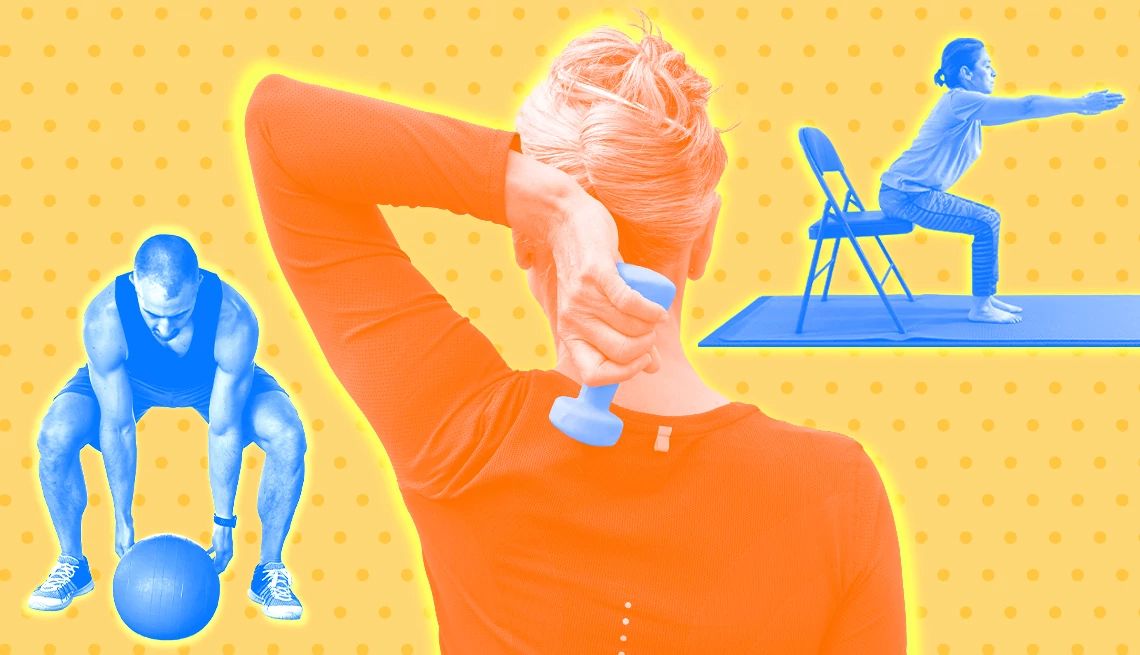A not-so-fun fact: Muscle power — the ability to produce force quickly — tends to decline at a higher rate than muscle strength in your 50s. Why does it matter? Because this explosive power is key to preserving your mobility and bone strength for the long haul, physiologists say.
So if you want to stay physically independent as you age, you’ve got to get moving now. Consider these power fitness tips from Shari Andrews, physician, personal trainer and author of Find Your Pulse. (And share any questions with your health care provider.)
1. Do sit-to-stand reps to increase lower-body strength
For a lower-body boost, try sit-to-stand drills, suggests Andrews. Move from a seated chair position to standing, back to seated — without using your hands to propel you. Or try bodyweight squats with a chair behind you to prevent injury.
2. Try a side toss to increase torso strength
Add power exercises for your torso, such as a medicine-ball throw called a standing side toss: Stand perpendicular to a wall with an inflatable ball at the hip that’s farther from the wall, then twist as you throw the ball against a wall.
3. Take a quick break between sets
Longer rest periods (like three to five minutes) can be ideal for people who build muscle strength by lifting heavy weights. But when you’re focused on functional power training, resting just 30 to 60 seconds between sets “can actually be ideal to keep heart rate up and mimic real-world demands,” notes Andrews.
4. Focus on form
To avoid injury, master any movements before adding more weight or speed, Andrews says.
5. Squeeze in your sessions
“You don’t need a lot of time,” says Andrews, noting you can focus on building power by working out for just 20 to 30 minutes two or three times per week.

